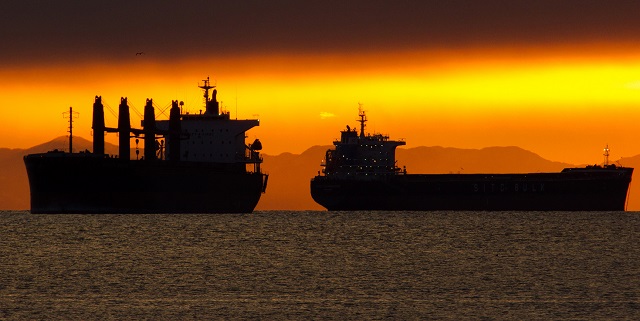Sea Control by coincidence: how merchant ships survive without help from the Navy (part 1)

Hugh White has yet again kicked the hornet’s nest by
questioning the government’s naval ship-building program. In doing so, he’s
aroused a
swarm of strident
defenders of Sea Control, which is the ability to keep ships afloat, and the objective which underpins the rationale for high-value surface combatants. Mark Thomson and Andrew Davies have produced some
sensible numbers detailing just how hard maintaining Sea Control will be when faced with a determined, missile-capable adversary. Their numbers don’t lie, but Sea Control isn’t dead, at least not everywhere. In fact, in certain times and places, it’s actually quite easy for a ship to stay afloat, even without expensive missile-defence systems.
Somewhere a few thousand miles East of New Zealand and South of Hawaii, it’s likely that even the most intensely fought war in Asia leaves a ship completely undisturbed. To create the WWII ‘submarine peril’ that
frightened Churchill in the Atlantic, Germany deployed
hundreds of submarines, many of which rarely or even never encountered a target in their patrols. With the vast Pacific and Indian Oceans to our East and West, and many alternate sea-routes thousands of kilometres from the nearest likely enemy air or naval bases, only long-range nuclear submarines will be able to patrol these areas. In such times and places, we have a useful measure of Sea Control by
coincidence, where the vastness of the oceans makes it highly improbable that our opponent will have any missiles or torpedoes in the vicinity.
Two important questions arise. Do these places and times actually matter enough to do anything useful, like defend trading routes for vital supplies, which both
Hugh and
James acknowledges as being a key motive for Sea Control? And do ships have a meaningful role to play around the margins of these oceanic expanses, where the odds of coincidence with an armed adversary are noticeably higher?
I’m confident the answer to the first question is yes. Not all trade is equal, and neither are all shipping routes. Australia might be less rich if we can’t sell iron ore and coal to China, Taiwan, Japan and South Korea. Similarly, our clothes will cost more if we knit and weave all the fabrics here in Australia, rather than importing them from Southeast Asia. But here I agree with Mark and Andrew, in the event of war involving any of those countries, the ships will have to pass within range of so many air-fields, submarines, missiles and mines that defending them would be nearly impossible, no matter how many and what sort of frigates we build. But we can survive relatively well, if not as prosperously, without some of fruits of nearly perfectly free movement on the sea that
Mutually Assured Economic Destruction has given us, should deterrence fail and conflict break out. However a few key imports may have a disproportionately large impact on our national wellbeing, in particular liquid fuels, and the vehicles, machinery, and spare parts we depend on for moving around and processing bulky essential goods, like food.
While liquid fuels are put up as
embodying our sea freight dependence, I remain unconvinced that our vast continent couldn’t find liquid hydrocarbons enough if we had to. We have some
oil in Bass Strait and ample agricultural land to produce
biofuels, and
new oil discoveries are still being made. While current production from those sources
looks pitiful compared to our daily consumption of around a million barrels, in a crisis they could provide some buffer if appropriately expanded. More encouragingly, Australian companies are investing in
coal-to-liquid and
shale technologies which have the potential to tap much larger domestic reserves, in the order of billions of barrels. A few frigates worth of investment in those natural assets (and the refining capacity required to exploit them) could well make us oil independent.
The trade that we depend on much more heavily is in technology and machinery. If we want to expand our own extraction and refining industries to produce syncrude from lignite and bio diesel, where do we get the equipment for that? If we need to build mills to knit our own cotton into t-shirts because Vietnam is cut-off, how do we import the tools and technology we need? It’s high-value, low-volume technical equipment which Australia will really rely on for our survival. Happily, North America and Western Europe are
already key sources for exactly this sort of high-value/low-volume import, and every ocean in the world (except the Arctic and Western fringe of the Pacific) can provide us with millions of square kilometres of highly redundant sea-routes to reach them from our Southern Ports, even whilst staying thousands of miles away from a conflict in East Asia. The extreme depth and separation that our continent affords us is an already
well-recognised asset in this respect.
So it’s worthwhile acknowledging that
limited Sea Control for high-value critical imports is a viable concept, largely thanks to the vast expanses of the southern oceans to which our geography has gifted our key ports’ proximity. In a second instalment, I’ll explore what role the Navy could play in enhancing this coincidence to protect trade, and where ships fit into that.
 Print This Post
Print This Post